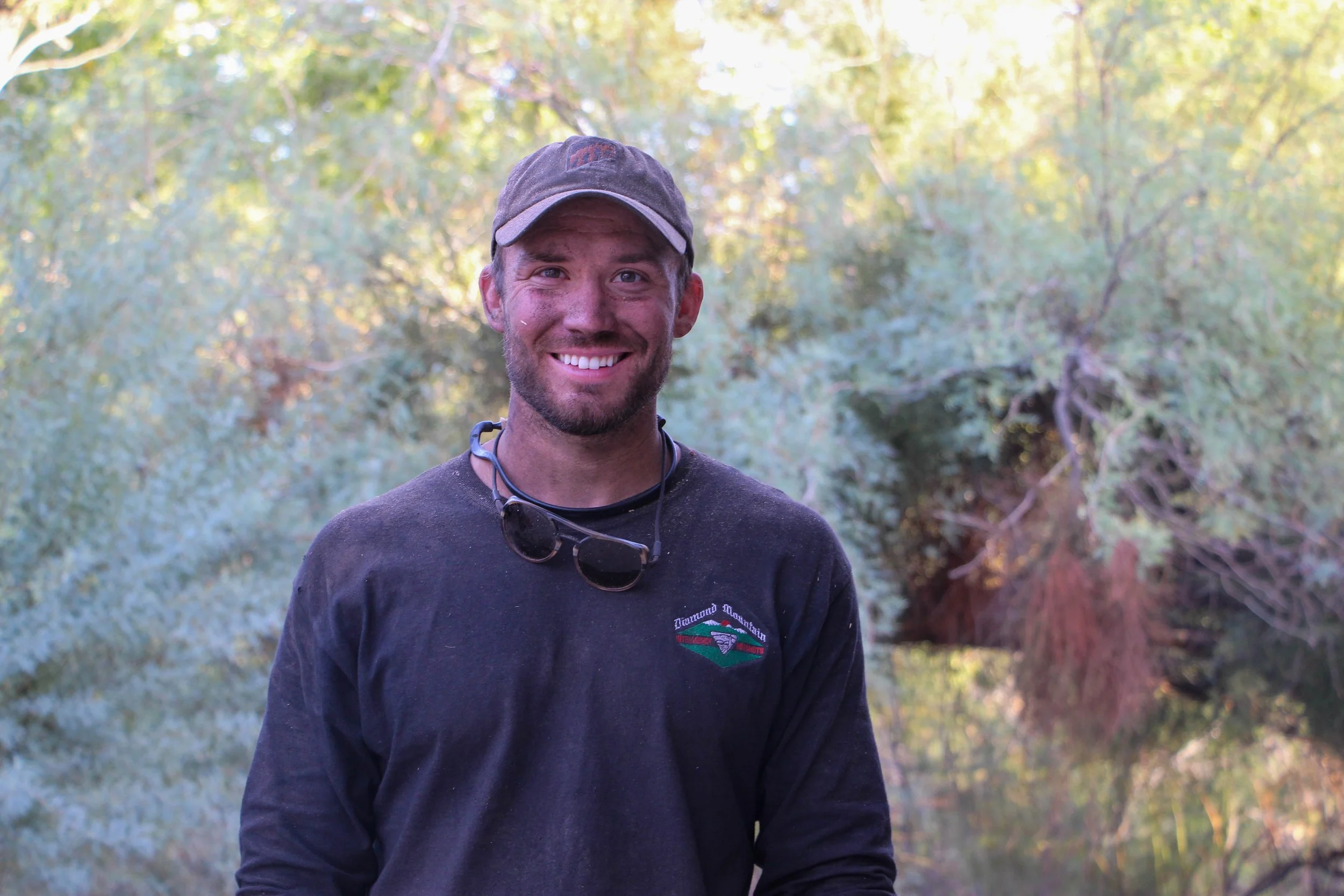Matt Radar
BLM Wildlands Fire Fighter
Shoshone, CA
11/15/21
Matt Radar, a BLM Wildlands Fire Fighter, joined us in our Shoshone California to camp to tell us about his career in natural resource management and firefighting. After graduating from the University of Nevada, Las Vegas with a degree in biology, Matt worked briefly in research labs but quickly discovered that he wanted work outside and in conservation. He trained to become a timber feller, one of the more hazardous jobs in wildland firefighting and also one of the most challenging.
Earlier in the day we met him briefly at the China Ranch, where he was felling and cutting hazard trees from the recent Willow Fire on the Ranch. Energetic and upbeat, Matt also generously shared his advice about how to get jobs in natural resource fields: be persistent, take unpaid internships to get your foot in the door, do good work, and people will notice you. And sometimes, trust serendipity.
By Phil Brick
Photo credit: Neave Fleming




